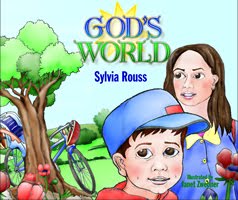I wrote this blog when I was still teaching, and I think it’s worth looking at a second time:
The school where I work has a policy that allows for the use of food in sensory experiences. One of our teachers recently asked one of our maintenance men to fill a tactile table with beans. He said he couldn’t do it and when she asked if he had hurt his back, he replied, “No, but there are people in my country who are starving and these beans would feed a family for a week or more.”
The teacher shared his comment with me and we decided to use the beans for planting instead. We both shared what had happened with two of our administrators. One Assistant Director agreed that it was inappropriate to use food in play. She suggested using birdseed, pebbles, feathers and a variety of other non food materials. The other insisted that food was an important element in tactile play. She indicated that rice, cornmeal and beans are non toxic and should be available for sensory experiences. She was adamant that playing with food had educational value for young children and my appeal to rethink this position went nowhere.
I was stunned by her response because, for me there really isn’t a convincing argument that says the benefits of using food in tactile play outweighs the message we send children—that food is in abundance and need not be respected. I recognize the importance of providing sensory experiences to young children but using food in play demonstrates a cavalier attitude toward wasting food when there are people who live in poverty. We collect food for a food bank each week to help the children understand that there are people who are hungry. We recite blessings with the children to thank God for food. Respecting food and eating God’s bounty is a value central to Judaism and I felt ashamed that the maintenance man needed to take the stance he did to remind us of something so obvious. I respect him for sharing his feelings. I know that there is a debate in many schools about using food in play but I feel there is a moral high ground that should be taken. There are other tactile and sensory opportunities that do not involve using food. Hearing the comment made by our maintenance man certainly made me pause and reflect.
I looked to Jewish sources on this subject and discovered this quote in the Talmud: “Jews should be taught when very young that it is a sin to waste even small amounts of food (Berachot 52b)”. I feel it is a perfect lesson for Tu B’Shevat. On Tu B’Shevat we remind children about the value of Tikun Olam but unless we practice what we teach, it trivializes an important Jewish value.

Click on image for a free copy of God’s World for use by teachers with their students and parents with their childen
EDUCATIONAL LINKS
Mazon: A Jewish Response to Hunger
Sova, Community Food and Resource Program
Food and Agricultural Organization, United Nations
TACTILE ALTERNATIVES TO FOOD IN THE CLASSROOM
- Leaves
- Rocks &/or pebbles
- Twigs
- Sea shells
- Packing materials like “peanuts”
- Shredded paper
- Fabric scraps
- Old puzzle pieces
- Ping pong balls
- Buttons
- Straws
- Marbles
- Costume &/or plastic jewelry
- Small toys
- Pieces of sponges
